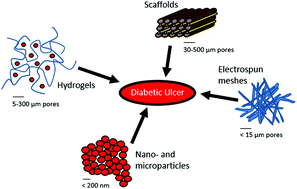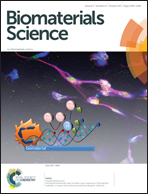Recent advances in biomaterials for the treatment of diabetic foot ulcers
Abstract
Diabetes mellitus is one of the most challenging epidemics facing the world today, with over 300 million patients affected worldwide. A significant complication associated with diabetes is hyperglycemia, which impairs wound healing. The rise in the diabetic patient population in recent years has precipitated an increase in the incidence and prevalence of chronic diabetic wounds, most commonly the diabetic foot ulcer. Although foot ulcers are difficult to treat due to their complicated pathology, outcomes have improved with the development of increasingly sophisticated biomaterials that accelerate healing. In this review, we describe recently developed biomaterials that elicit healing through cell–material interactions and/or the sustained delivery of drugs. These tunable therapeutic systems increase angiogenesis, collagen deposition, cell proliferation, and growth factors concentrations, while decreasing inflammation and enzymatic degradation of the extracellular matrix. As the field of biomaterials for wound healing continues to mature, we expect to witness a broader range of clinical options that will speed healing times and improve patient quality of life.

- This article is part of the themed collection: Emerging Investigators 2017


 Please wait while we load your content...
Please wait while we load your content...